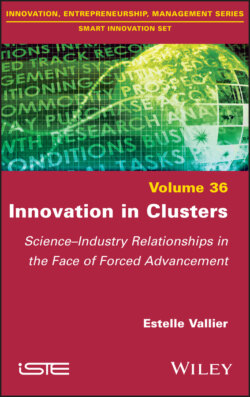Читать книгу Innovation in Clusters - Estelle Vallier - Страница 21
1.1.1. The economic approach of industrial atmosphere
ОглавлениеIt is interesting to trace the history of the cluster back to the British economist Alfred Marshall, one of the fathers of the neoclassical economics. He developed the concept of the industrial district in one of his reference works, Principle of Economics, published in 1890. According to Marshall, there are two potential industrial organizations:
On the one hand, the organization under the sole direction of the technical department integrated within a large enterprise. On the other hand, market and face-to-face (reciprocal) coordination of a disintegrated social division of work among smaller enterprises specialized in large segments of the production process (Benko et al. 1996, p. 120).
He then introduced a new element into the dominant thinking of the time, according to which productivity was linked to the division of labor within the enterprise (Marshall 2010, p. 119), asserting that work could be divided over a geographical area, between different entities. This is the industrial district, which he defines as the concentration of businesses and skilled craftsmen within a geographically limited space. Marshall sees three fundamental aspects to this: specialist employees, complementary industries and a permanent exchange of information and knowledge. These elements create a pool of skilled workers, thus making the district an efficient labor market. He explains the sustainability of the location of businesses in the same area using the principle of externalities and particularly economies of scale that would reduce production costs. Marshall distinguishes between internal economies of scale, derived from the resources of the businesses themselves, and external economies, obtained through the close proximity of similar but specialized businesses at a specific point in the production process. Moreover, since not all firms can afford all machines, the pooling of equipment allows each to increase its efficiency, without having to make heavy investments. Marshall’s original, but insufficiently supported by empirical data, contribution is his concept of “industrial atmosphere”, in which he describes the significance of knowledge transfer between enterprises, as well as transmission between colleagues, neighbors, members of the same family, etc.:
The secrets of industry cease to be secrets; they are, so to speak, in the air, and children learn many of them unconsciously. Work well done is immediately recognized and the merits of inventions and improvements in machinery, processes, and general organization are discussed within the industry straight away. If someone comes up with a new idea, it is immediately taken up by others and combined with suggestions of their own and thus becomes the source of other new ideas (Marshall 1990, p. 160).
This therefore gave pride of place to interindividual and intergenerational relations, fostering an atmosphere conducive to learning and the dissemination of knowledge. Nevertheless, at the end of the 19th century, Marshall’s industrial district was largely confined to a theoretical conceptualization on the eve of the Fordist period, based on the model of the large enterprise. It was not until the 1970s that the concept was revisited by Italian studies of the Third Italy, then taken up again in France.
